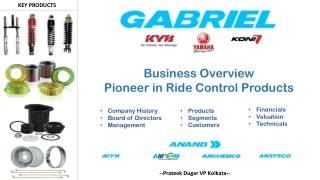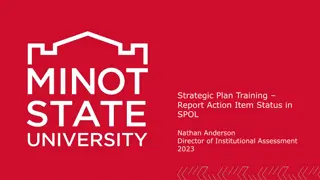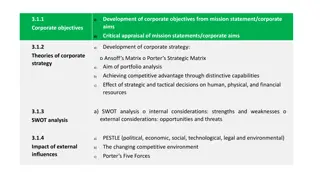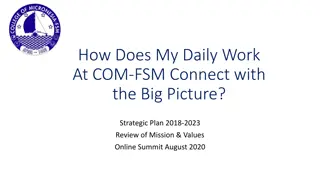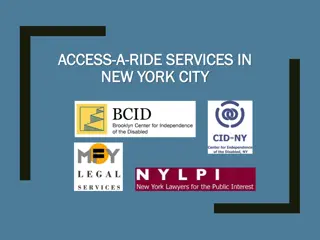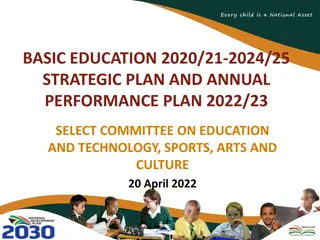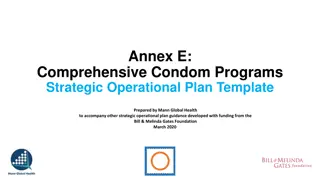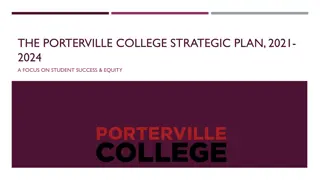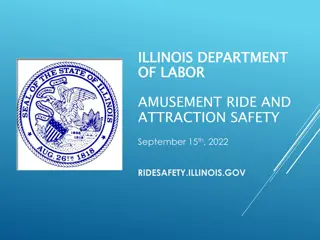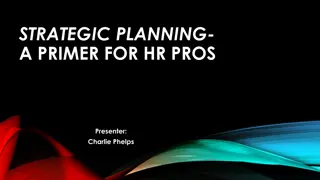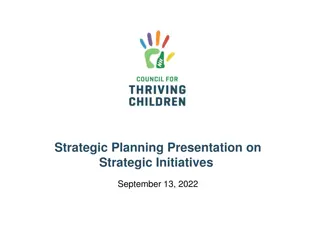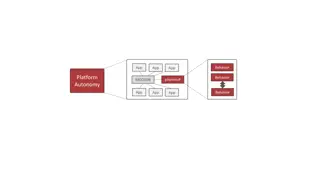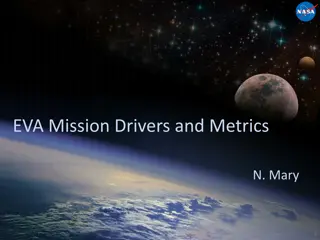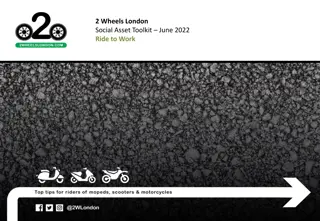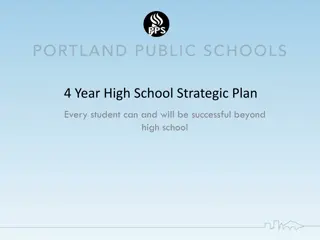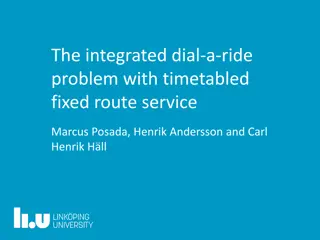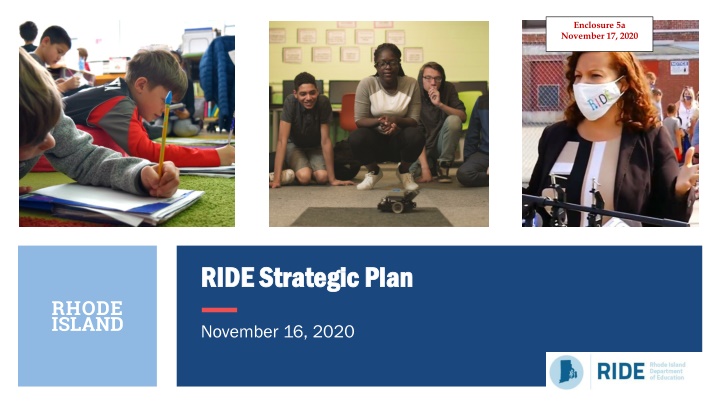
RIDE Strategic Plan and Mission Overview
In this overview, explore the collaborative approach behind RIDE's strategic plan development, along with the mission, vision, and values driving Rhode Island Department of Education towards creating opportunities for all students to succeed.
Download Presentation

Please find below an Image/Link to download the presentation.
The content on the website is provided AS IS for your information and personal use only. It may not be sold, licensed, or shared on other websites without obtaining consent from the author. If you encounter any issues during the download, it is possible that the publisher has removed the file from their server.
You are allowed to download the files provided on this website for personal or commercial use, subject to the condition that they are used lawfully. All files are the property of their respective owners.
The content on the website is provided AS IS for your information and personal use only. It may not be sold, licensed, or shared on other websites without obtaining consent from the author.
E N D
Presentation Transcript
Enclosure 5a November 17, 2020 RIDE Strategic Plan RIDE Strategic Plan November 16, 2020
Collaborative approach to developing the strategy Over the last year RIDE, the Long Term Education Planning Committee and other key partners collaborated with school communities across the state to develop our strategic plan In addition to the foundational guidance provided by the Commissioner s vision for education and the Long Term Education Planning Committee strategy the steering committee incorporated the following: 2020 student, family and educator SurveyWorks results LEA leader surveys and feedback RIDE staff surveys, interviews, and focus groups 2
Strategic Plan and Implementation Framework STRATEGIC PLAN STRATEGIC PLAN IMPLEMENTATION IMPLEMENTATION by Departments and Teams 3
Mission and Vision The RIDE mission articulates the shared purpose that guides our collective efforts, while the vision is the desired condition that orients and unifies that purpose towards a common destination Mission Mission The mission of the Rhode Island Department of Education is threefold: 1. To lead and support districts, schools, and communities through a unified, strategic direction for education in the state. 2. To use policy, advocacy, and governance structures to create an environment that advances opportunities for all students. 3. To maintain collaboration and efficiency in the department that enables innovation, agility, and continuous learning. Vision Vision RIDE creates conditions for every Rhode Island student to think critically and collaboratively, and act as a creative, self-motivated, culturally and globally competent learner. Rhode Island students are prepared to lead fulfilling and productive lives, succeed in academic and employment settings, and contribute meaningfully to society. 4
Values Students First Students First Our decisions are grounded in how to best serve all students. We support districts and schools to be engaging, provide students with intellectual choice, and prepare students to be lifelong learners. We think about students first, in every decision We think about students first, in every decision we make. we make. Partnership Partnership Decisions that impact students are best made by those who are deeply attuned to students' needs. We believe in meaningfully engaging families and community partners to drive decisions and co-develop ideas and practices that best serve the needs of students and encourage their ongoing development and growth. We co We co- -create opportunities for students with create opportunities for students with community members. community members. Diversity Diversity We value diversity and make decisions grounded in cultural competency. We believe all students are capable of learning and achieving, and that staff with diverse backgrounds add value to the learning community. We create equitable pathways to success for We create equitable pathways to success for staff and students. staff and students. Transparency Transparency We share transparent, accessible information both internally and externally with stakeholders so that decisions can be made thoughtfully, based on data, to benefit all students. We share information and decisions We share information and decisions transparently with our partners. transparently with our partners. Results Results We set ambitious statewide expectations for academic achievement and social, emotional, and behavioral health. We support districts and empower families to meet these goals. We regularly monitor progress toward our goals and adjust our approach as needed to improve services for students and communities. We focus on outcomes but are flexible in our We focus on outcomes but are flexible in our approaches to achieve them. approaches to achieve them. 5
Theory of Action If RIDE . If RIDE . Sets a high bar for educational Sets a high bar for educational excellence excellence that is based on the belief that all students can and will achieve great outcomes, Then RIDE can Then RIDE can So that So that Ensure all schools meet or exceed the meet or exceed the high bar high bar set for educational excellence and student outcomes and, Develops policies and practices that Develops policies and practices that enable all students to achieve this enable all students to achieve this high bar high bar for excellence through school-based services that are supported by the district and state, All levels of the educational system work together to enable equitable opportunities and equitable opportunities and excellent outcomes excellent outcomes for students. to enable Partner with districts and schools to create conditions that meaningfully create conditions that meaningfully improve student learning improve student learning and growth, Engages stakeholders to co Engages stakeholders to co- -develop core policies and practices core policies and practices in response to community needs, develop Partners with schools and districts to Partners with schools and districts to adapt their practices adapt their practices and address the unique challenges that keep students from achieving great outcomes, 6
Priorities 1 1 Equity Equity 2 2 Excellence in Learning Excellence in Learning 3 3 Engaged Communities Engaged Communities 4 4 World Class Talent World Class Talent 5 5 Governance Structures Governance Structures 7
Equity Priority Statement and Goals Education systems have a responsibility to identify and dismantle the root causes of educational inequity so that all students regardless of race, language, socioeconomic status, ability, or other identities have access to equitable opportunities. Measurable Goals: Measurable Goals: 1. By July 2025, all students in every LEA will achieve at least one year s worth of learning annually based on the Student Growth Index. 2. By July 2025, the gap in the percent of inexperienced teachers and school leaders in high and low poverty schools will close. To achieve this goal, the share of inexperienced teachers in high poverty schools will decrease from 21% to 12%. The share of inexperienced school leaders in high poverty schools will decrease from 29% to 25%. 3. By June 2021, 100% of RIDE teams will use the Equity Decision Making Tool as a consistent, explicit step in teams' formal decision-making practices as measured by a staff survey and leader observations. 8
Excellence In Learning Priority Statement and Goals All students are able to learn and grow. It is the job of educators systemwide to provide tools, opportunities, and environments that support student learning and the development of the whole child. Measurable Goals: Measurable Goals: 1. By July 2025, 75% of students will achieve proficiency in reading, math, and science, as measured by the RICAS assessment. 2. By July 2025, the percent of students who are chronically absent will decrease by 11 percentage points, from 21% to 10%. 3. By July 2025, the state 4-year graduation rate will increase by 11 percentage points, from 84% to 95%. 4. By July 2025, the percent of students who report a feeling of belonging in their school will increase from 68% to 90% in grades 3 - 5, and from 43% to 65% in grades 6 12. 5. By July 2025, the percent of students who report they are interested in their classes will increase from 63% to 80% in grades 3 5, and from 33% to 60% in grades 6 12. 9
Engaged Communities Priority Statement and Goals Decisions and policies are student-centered and therefore will be made by, and in conjunction with, those closest to the student - families, community members, school administrators and teachers. Measurable Goals: Measurable Goals: 1. By July 2025, the percent of families who report a favorable opinion of their child s school culture and instructional decisions will increase from 69% to 80%. 2. By July 2025, the percent of families who report they are meaningfully engaged in their child s learning will increase from 69% to 80%. 3. By July 2021, RIDE will set and monitor progress towards an ambitious goal for the use of stakeholder feedback in RIDE decisions to be achieved by July 2025. 10
World Class Talent Priority Statement and Goals Educators and leaders are valued, reflect the rich diversity of Rhode Island, and are instrumental in promoting student success. Educators are professionals who need support to continuously develop skills and knowledge relevant to the students they teach. Measurable Goals: Measurable Goals: 1. By July 2025, the percent of educators who report they have engaged in professional development opportunities that are valuable and relevant will increase. This growth will be reflected in a 45% to 80% increase for teachers, a 47% to 80% increase for support professionals, and a 67% to 80% increase for school leaders. 2. By July 2025, the percent of students who report that the teachers in their building are supportive and effective will increase from 80% to 90% in grades 3 5 and from 60% to 70% in grades 6 12. 3. By July 2021, RIDE will set and monitor progress towards an ambitious recruitment and retention rate for teachers of color across the state to be achieved by July 2025. 11
Governance Structures Priority Statement and Goals Governance structures at the school, district, and state level are built to serve the needs of students and their communities. Measurable Goals: Measurable Goals: 1. By July 2025, the percent of school leaders who report that they have the autonomy and information to make key decisions around scheduling, resource allocation, and hiring and assigning staff will increase from 75% to 85%. 2. By July 2025, the percent of families that report they are involved in key school improvement decisions will increase from 41% to 50%. 3. By July 2021, RIDE will set and monitor progress towards a goal for the percentage of LEA leaders that believe RIDE is timely and effective in its responsiveness, to be achieved by July 2025. 12
Appendix 13
Steering Committee Members Name Name Role Role Ana Riley Deputy Commissioner Kelvin Rold n Deputy Commissioner Tom McCarthy Chief of Staff Christine Lopes-Metcalfe CEO, School Building Authority Anthony Cottone Chief Legal Counsel Makila Meyers Performance Management Executive Spencer Sherman Director, College & Career Readiness David Sienko Director, Student, Community, & Academic Supports Pascale Thompson Director, School Improvement William Trimble Associate Director, Finance & Statewide Efficiencies Phyllis Lynch Director, Instruction, Assessment, & Curriculum Veronica Salas Multilingual Learner Specialist, Student, Community, & Academic Supports Jermaine Curtis Charter School Specialist, Charter Schools Christine Kechejian Assistant Administrative Officer, Finance & Statewide Efficiencies Joseph Da Silva School Construction Coordinator, School Building Authority Kirtley Fisher Associate Chief of Staff Lisa DiMartino Education Strategic Initiative Officer, Rhode Island Foundation 14
Equity Description and Commitments RIDE identifies and works to dismantle the root causes of institutional and structural inequities in its programming and services. RIDE reshapes policies, practices, attitudes and cultural messages that lead to inequitable outcomes for students based on their race, language, ability, socioeconomic status, or other identities. All RIDE staff are responsible for evaluating the daily decisions that impact schools and students, ensuring these decisions further equity and reduce bias. RIDE collectively builds strong habits of challenging the status quo using a shared definition of equity and a consistent process for evaluation. RIDE takes collective responsibility for monitoring outcomes, adapting practices, and sharing information back with stakeholders. RIDE removes barriers that prevent stakeholders from participating in this process, and progress monitors and adapts this cycle if goals are not met. Commitments: Commitments: 1. RIDE advocates for a funding formula that distributes resources equitably based on student, school, and community needs. 2. RIDE provides tools that allow schools to innovate, implement best practices, and seek out efficiencies so that funds are used to improve outcomes for historically underserved students, including multilingual learners and differently abled students. 3. RIDE develops and disseminates diversity, equity, and inclusion training and resources for all state educators, and partners with LEAs to ensure that resources are leveraged at the district level. 4. RIDE creates conditions that allow all LEAs to recruit and retain experienced teachers and school leaders that reflect the ethnic, racial, and linguistic diversity of their student population. 5. RIDE uses a consistent process to evaluate the impact of formal policy decisions on schools and students, applying an equity lens. 15
Excellence In Learning Description and Commitments As an agency, RIDE s core mission is to create an educational landscape that supports student learning. To achieve this mission, RIDE creates the conditions for LEAs to build and implement a world-class pre-K to 12 educational system that is rooted in rigorous standards, aligned curriculum and instruction, experiential learning opportunities, and ongoing assessment. RIDE bases its policy and programming decisions on the belief that all students can learn and develop as well-rounded individuals. To do this, RIDE sets high expectations for comprehensive social and emotional learning, the promotion of multilingualism, and the creation of pathways for students to identify and pursue strengths and interests. RIDE then partners with LEAs and schools to ensure they are well-equipped to meet these expectations, with the end goal of improving student learning. Commitments: Commitments: 1. RIDE provides support and resources that allow every district to adopt and implement high-quality curriculum materials. 2. RIDE sustains a statewide assessment system that informs professional learning and operational support. 3. RIDE develops and implements policies that have a fundamental goal of closing equity gaps and increasing proficiency for all students, including those who are underserved and diverse learners. 4. RIDE supports LEAs in developing and implementing innovative pathways aligned to students interests, needs, and careers, and providing opportunities for internships and work experience through Career and Technical Education. 5. RIDE ensures LEAs and schools maintain 21st century learning environments with a blend of physical and digital tools that allow students to develop skills and relationships that will prepare them for success after high school. 6. RIDE partners with LEAs to strengthen school culture and create safe and supportive school environments. 16
Engaged Communities Description and Commitments RIDE views stakeholder engagement in the policy development process at the school, LEA, and state level as a foundational principle that drives decision-making, rather than an additive step. As such, RIDE creates the conditions for meaningful family and community engagement at all levels. RIDE ensures that resources released by the state for parents and communities are engaging and widely accessible through the use of clear language and translation options. RIDE develops policies and provides resources that build school and LEA capacity to maintain ongoing and intentional community engagement. Through this effort, LEAs will strengthen relationships with families and community members to encourage co-creation of programming that leads to strong results for students. RIDE develops and implements tools that specify the level of involvement stakeholders will have in major decision making within the agency, from being notified of decisions to driving final decisions. Commitments: Commitments: 1. RIDE centers community perspectives in its decision-making processes to determine where to make key investments that improve student learning. 2. RIDE adapts policies and practices to be more student-centered based on feedback from families, communities, and school-based staff. 3. RIDE promotes and provides holistic supports for children and families based on specific needs identified by both the community and the state. 4. RIDE forges outcomes-based partnerships with community organizations and industries to broaden the scope of services for students. 5. RIDE clarifies the entry points through which community members and other stakeholders can play a role in decision making in partnership with the agency, including community meetings, surveys, or other channels. 6. RIDE identifies and communicates, for all major decision making, the level of community involvement that will be required. 17
World Class Talent Description and Commitments RIDE works with pre-service programs for educators in the state to improve the quality and relevance of certification programs, and to make them more accessible and attractive to a larger pool of future educators. This effort aims to highlight teaching as a viable and competitive field for higher numbers of smart and motivated individuals considering entering the teaching profession. RIDE supports LEAs to develop innovative recruitment and retention programs that elevate the teaching profession and attract a workforce that reflects the diversity of their student body. RIDE provides teachers, schools, and LEAs with professional learning resources that are easily accessible, relevant, and contribute to educators ongoing development. RIDE partners with LEAs to create strategies to recognize and elevate educators so they are empowered to build long-term careers and take on formal and informal leadership roles. RIDE deploys similar leadership development and career opportunities within the agency itself to encourage commitment to state educational systems. Commitments: Commitments: 1. RIDE supports LEAs in developing strategies to attract, recruit, and retain a highly-skilled and diverse workforce that reflects Rhode Island s students. 2. RIDE creates flexible pathways into the teaching profession and develops programs aimed to expand and diversify the educator pipeline. 3. RIDE promotes and provides high-quality professional learning for educators and situates professional learning at the center of improvement. 4. RIDE creates conditions that allow for leadership development and opportunities for career advancement for educators at the state, LEA, and school levels. 18
Governance Structures Description and Commitments RIDE develops educational governance structures, including frameworks to delineate decision making authority, regulations, procedures, and guidelines, that first and foremost serve students and support learning. RIDE sets a high bar for educational excellence in the state, then equips LEAs and schools with the policy guidance and technical assistance needed to drive towards this high bar. As needed, RIDE provides differentiated support to districts to improve student outcomes. RIDE promotes school-based management by empowering school leaders to make decisions. To do this, RIDE provides school leaders with clear research and evidence to inform decision-making. RIDE establishes mechanisms for effective two-way communication with LEAs and schools so that student needs motivate changes in state and local supports. These changes are communicated clearly and quickly from the state down to schools. RIDE develops consistent methods to listen to and evaluate student, school, and community needs, which then drive programmatic and policy decisions. Commitments: Commitments: 1. RIDE sets high expectations for how LEAs will serve students and families and provides LEAs with the guidance and resources needed to meet these expectations. 2. RIDE equips school leaders with the information and resources they need to make informed decisions about how students are supported. 3. RIDE maintains clear communication with LEAs, schools, and communities. RIDE shares information with LEAs that is timely, consistent, and comprehensive. 4. RIDE is nimble in using feedback to adjust policies, resource allocations, and decision making, to best meet student needs. 19

